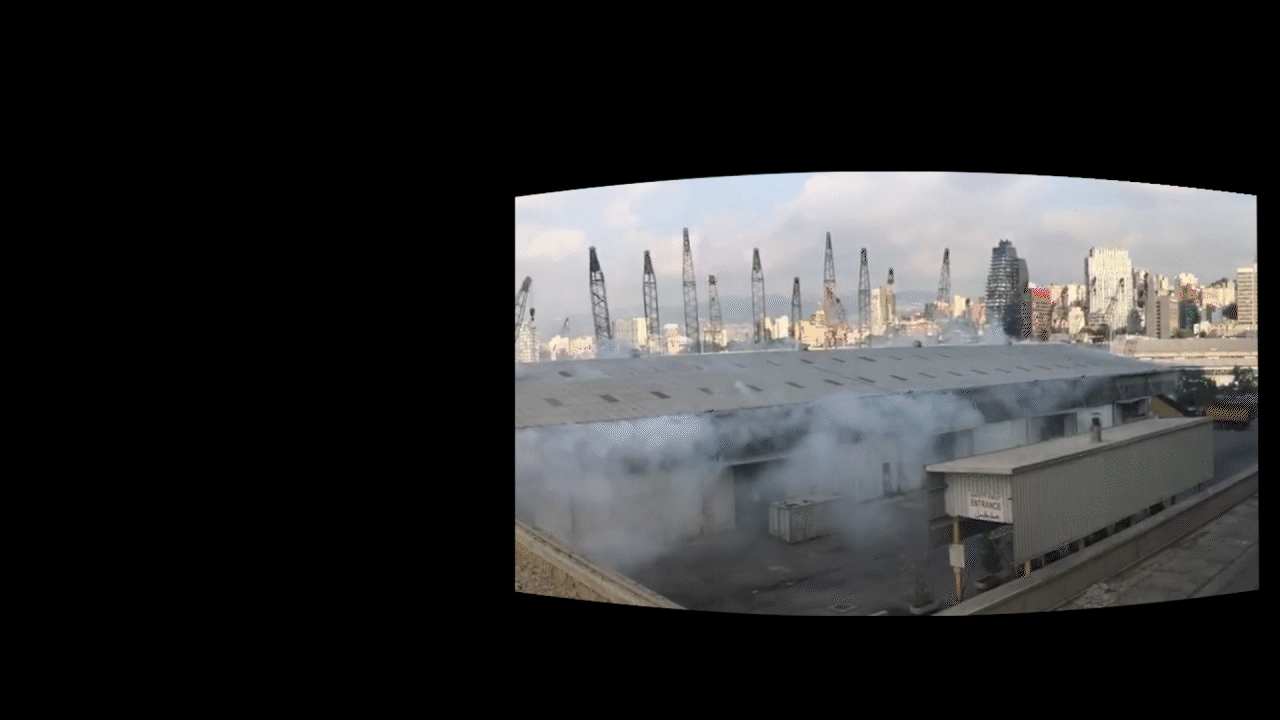This investigation marks the launch of the Febrayer Network / Forensic Architecture (FFA) Investigative Lab, collaboratively established to employ Forensic Architecture’s methodologies and techniques for monitoring and documenting human rights violations in pursuit of accountability in the Arab world.
This investigation is also part of a broader project examining the 4 August 2020 explosion in the port of Beirut, its causes and aftermath. See also:
The Beirut Port Explosion
The Beirut Port Explosion: Destruction of Destruction
The August 2020 explosion in the port of Beirut—understood to be one of the biggest non-nuclear explosions in recorded history—killed over 200 people and injured over 6,500, while devastating large parts of the city. Lebanese and international authorities quickly came to the same conclusion: The vast quantities of ammonium nitrate stored in warehouse 12 were detonated by a fire that was the consequence of shoddy welding work that had been carried out by Syrian workers on site earlier in the day.
Building on our previous investigation with Mada Masr into this deadly explosion, in which we mapped the progression of the fire, the epicentre of the blast, and the layout of the contents stored inside the warehouse, Forensic Architecture and the FFA Investigative Unit looked into the validity of these widely circulated claims about the origins of the fire.
Relying on previously unseen documents, access to leaked reports, open source materials, and a newly commissioned series of fire dynamics simulations, this investigation offers a close analysis of key moments preceding the blast and in so doing raises significant doubts about the culpability of the welders.
Since the explosion, attempts to investigate the incident have repeatedly been stalled and undermined by high level Lebanese government officials. The survivors of the blast have consistently emphasised the role of negligence in the incident, and demanded accountability from those responsible for the shipment of ammonium nitrate, its storage in the warehouse, and the lack of action taken by high level officials despite being issued numerous safety warnings.
Our investigation was undertaken as part of an ongoing effort to establish accountability in a political context where efforts to pursue due process have been continuously roadblocked, and migrant workers made into easy scapegoats to deflect blame from a powerful political establishment.
Methodology
Methodology
3D modelling and video analysis
In order to examine whether the fire could have indeed started around one of the doors indicated in the reports from the FBI and Lebanese Internal Security, we analysed footage of the warehouse in the minutes leading up to the explosion.
Our study of the evolution of smoke suggested that it is unlikely that the fire started from doors 9, 11 or 3, where the reports claimed that welding work had been conducted on the day of the blast.

To map the build-up of heat during the early stages of the fire, we analysed the exhaust ventilation system in the warehouse. Satellite imagery showed that the roof consisted of a total of 120 skylights. Using images taken from inside the warehouse, we made a critical determination: that the skylights’ coverings were composed of plastic, a material that would easily melt with the increase in temperature caused by an accelerating fire.
Analysing footage taken by nearby witnesses at the time of the explosion, we studied the condition of the skylights and identified those whose coverings had melted by locating the sources of the smoke rising up through the roof.
In doing this, we were able to produce a unique heat map of the interior of the warehouse.


Fire Dynamics Simulations
We worked with engineers at Kindling Safety, a non-profit dedicated to fire safety, to determine if the zone behind doors 5 and 6 could have been the region of the fire’s origin. Kindling developed a series of fire dynamics simulations to test this possibility. The results of these simulations correspond with our visual analysis of the videos shot around the warehouse.
The convergence between these different forms of analysis suggests that the area behind door 5 and 6 was likely to have been where the fire originated.
To have a point of comparison, we then asked Kindling to create a series of fire dynamics simulations of the fire’s movements had it started behind door 9 instead. These simulations, by contrast, did not correspond with the heat maps we had created nor with our visual analysis of the videos taken by witnesses at the scene.